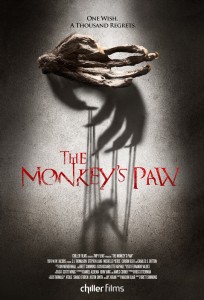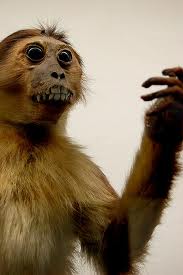 If only anybody were ever smart enough to call a lawyer and an English major before they made their three wishes, right? You’ve got to the get the wording just, just right, with all these exclusionary clauses, with all this over-specific verbiage to indicate exactly what you’re asking for. And bring an artist in as well, to go ahead and illustrate what you’re saying, to storyboard out the smallest most insignificant minutia of these wishes.
If only anybody were ever smart enough to call a lawyer and an English major before they made their three wishes, right? You’ve got to the get the wording just, just right, with all these exclusionary clauses, with all this over-specific verbiage to indicate exactly what you’re asking for. And bring an artist in as well, to go ahead and illustrate what you’re saying, to storyboard out the smallest most insignificant minutia of these wishes.
Don’t worry about being too redundant or pedantic, either. You have to go that far. Because the wishgivers of the world, at least according to the stories, they will willfully misinterpret whatever you say. They’ll gleefully misinterpret it. It’s like—it’s like, sure, they’re bound by ‘laws’ to follow your instructions. But if you leave any wiggle room at all, then look out, you’re about to become a chalkboard on which they can carve a cute rhyming poem about how much it chafes being bound by these rules.
Case in point:
Another case in point: The Monkey’s Paw, a bloody retelling of that 1905 short story by WW Jacobs. Except, you probably remember it as happening over the course of a single day, yes? Not feature-length. Here it is in short: a couple acquires a magic talisman that grants three wishes, one of which kills their son, one of which brings him back, one of which sends him away. So, it’s built for three acts, but, in the story at least, those acts are bam bam bam fast, and then the story’s done. Trying to dilate those proceedings out to ninety or a hundred minutes would have been a dicey proposition to say the least.

Luckily, The Monkey’s Paw doesn’t do that. Instead of setting the story back in some time where they’re going to have to bring in a period-costume specialist, The Monkey’s Paw ports the magic talisman—this mummified monkey’s paw trinket—ahead in time, and plugs it into a different group of characters.
However, man: this monkey’s paw is nothing if not a student of history. The same dynamic kicks into action as soon as that first wish is made. Somebody dies, somebody comes back, then, what to do with that third wish? Like the poster so aptly states, “One wish, a thousand regrets.” It’s a very The Butterfly Effect kind of cautionary tale, one you might want to keep handy in case you stumble upon a magic lamp, a talking fish, a rotted old monkey hand.
Part of that cautionary tale, too, it’s one wonderfully cringeworthy set-piece kill scene, and then one completely hilarious kill scene. Horror folk will appreciate that kind of updating, I suspect. And, I conjure Wishmaster, sure, but back far enough off the movie and it also seems to share a dramatic spine with Jumanji—or maybe I just default there when the ‘genie’ is an object, and doesn’t talk like Robin Williams.

And, what’s really pretty cool about The Monkey’s Paw, it’s that, the way it’s built now, if enough people watch it, it could go The Fast & the Furious route, and run sequels into the horizon. Like with Jason Voorhees, I mean, you could have a rotating cast. The monkey’s paw goes here, then it lands there, now it’s over there. And, used to, in World War II, it was there. For all we know, this monkey’s paw could have played a part in every turning point in our history, and in all our history to come.
The real sequel, though, it’s not about wishes at all. It’s about a one-handed monkey standing just off in the shadows, watching you. Waiting for you to look away.
You’ll wish you never saw it standing out there, and then try to reel those words back in. It’s too late, though. There’s already a pitchfork racing for your eyes, so—just as you wished—you can never see that one-handed monkey again.
And that’s just the way he wants it.




